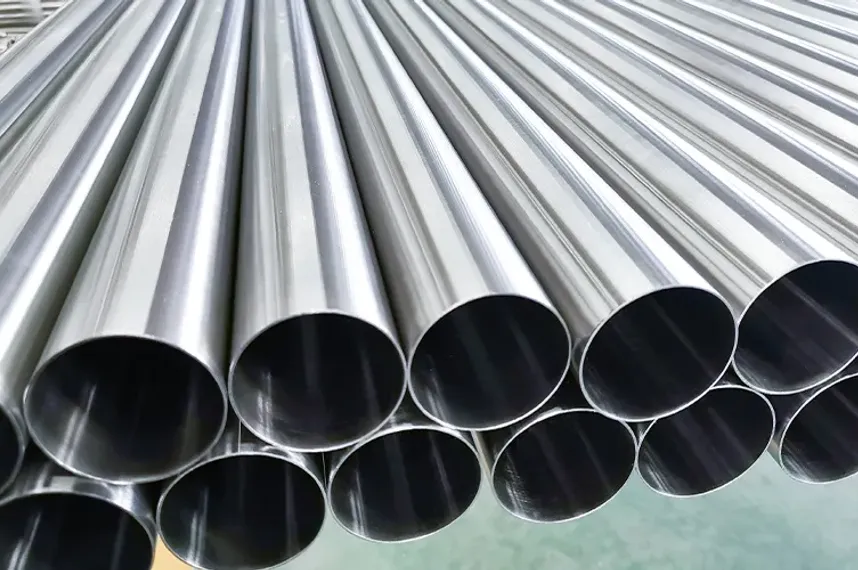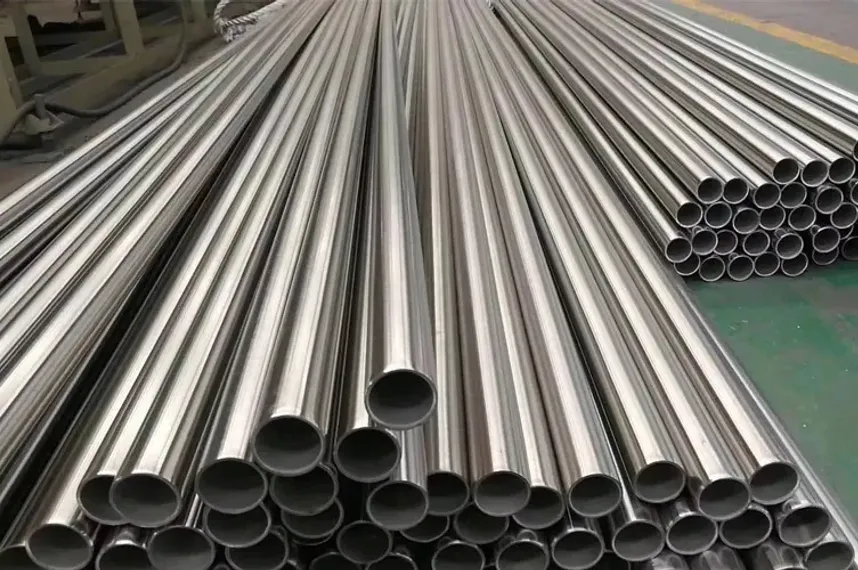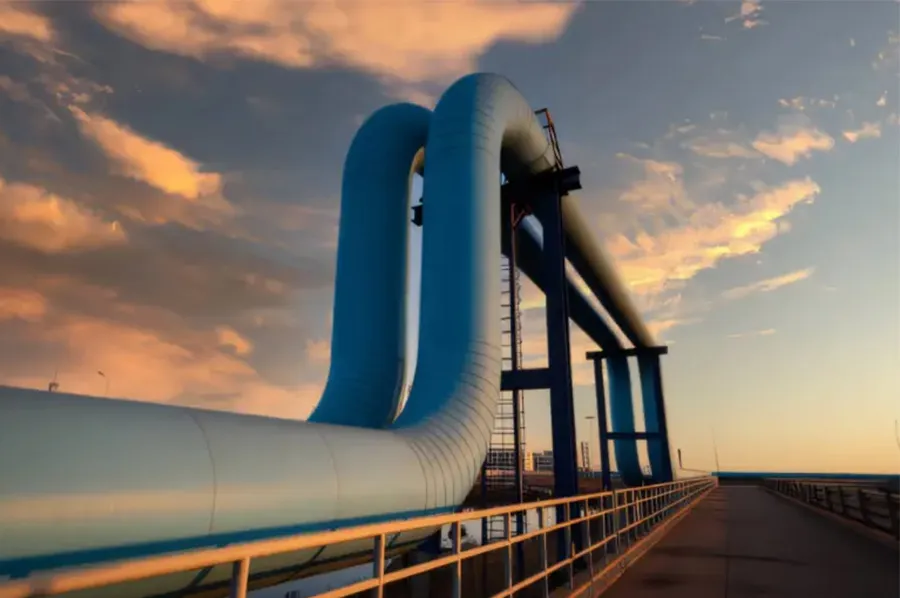Are you struggling with pipe leaks, system failures, or unplanned downtime caused by subpar steel tubes? Such issues can damage your reputation and erode customer trust. Discover why seamless stainless steel tubing is the gold standard for reliability, strength, and long service life in demanding industrial settings.
A seamless stainless steel tube is a hollow, cylindrical product manufactured by extruding or drawing a solid stainless steel billet without any weld seam. This produces tubing with consistent wall thickness, exceptional corrosion resistance, and superior strength—ideal for critical uses across industries such as oil and gas, food and beverage, aerospace, and construction.
Stainless steel tubing includes all hollow, cylindrical products made from stainless steel alloys, prized for their corrosion resistance and mechanical strength. Tubing comes in two main types: seamless stainless steel tubing and welded stainless steel tubing.

Seamless stainless steel tube
The manufacturing process for seamless stainless steel tubing is highly engineered to ensure quality and reliability:
| Step | Key Detail |
|---|---|
| Billet | Solid stainless steel, conditioned and cut to size |
| Piercing | Mandrel forms initial hollow tube |
| Elongation | Extrusion or pilgering increases length |
| Sizing | Cold drawing for accuracy (ID, OD, wall thickness) |
| Heat Treatment | Annealing for strength and corrosion resistance |
| Inspection | Ultrasonic & eddy current testing |
Quote:
“The seamless process produces tubing with superior strength and corrosion resistance, making it the preferred choice for high-performance and safety-critical applications.” — Senior Engineer
Should you choose seamless or welded stainless steel tubing?
This decision affects performance, cost, and safety. Here’s a direct comparison:
| Feature | Seamless Tubing | Welded Tubing |
|---|---|---|
| Weld Seam | None | Present (longitudinal) |
| Strength | Higher, uniform | Slightly lower (possible weak seam) |
| Wall Thickness Range | Consistent, thicker available | Variable, thinner options possible |
| Pressure Resistance | Excellent (critical applications) | Adequate (structural, non-critical) |
| Cost | Higher | More economical |
| Availability | Standard & custom sizes | Wide variety |
| Typical Applications | Oil & gas, aerospace, food, pharma | Architecture, automotive, furniture |
Key Takeaway:
Seamless tubing is recommended for high-pressure, high-purity, or critical environments. Welded tubing may be preferred for cost savings and less-demanding structural or decorative applications.
Corrosion resistance is what truly sets stainless steel tubing apart from other materials. In industries such as chemical processing, oil and gas, and food and beverage, tubes are exposed to aggressive chemicals, fluctuating temperatures, or constant washdowns. Poor corrosion resistance leads to leaks, contamination, and premature equipment failure.
Case Study:
A large beverage manufacturer switched from welded tubing to seamless stainless steel coil tubing in their bottling plant. The seamless tube’s superior corrosion resistance and uniform wall thickness eliminated downtime from leaks and enabled longer production runs—saving thousands in maintenance costs each year.
For in-depth industry insights, see our guide on corrosion-resistant stainless steel tubing for the food and beverage industry.
There are many types of stainless steel tubing to match different industrial needs, and each alloy offers distinct properties:
| Alloy Type | Corrosion Resistance | Key Application Areas |
|---|---|---|
| 304/304L | Good | Construction, furniture, equipment frames |
| 316/316L | Excellent | Food, marine, pharmaceuticals |
| Duplex | Superior | Oil & gas, desalination, chemical plants |
| Nickel Alloys | Extreme | Aerospace, reactors, heat exchangers |
Tip: When selecting the right alloy, consider the chemical environment, required mechanical properties, and your project’s specification or standard (ASTM, ISO, EN, etc.).
Explore our detailed guide to choosing stainless steel tubing alloys.

What Are the Main Types of Stainless Steel Tubing and Their Alloys?
Choosing the correct outside diameter, wall thickness, and tube shape is essential to ensure your stainless steel tubing is fit for purpose:
| Specification | Impact on Performance |
|---|---|
| Wall Thickness | Pressure resistance, structural integrity |
| Outside & Inside Diameter | Flow rate, compatibility with fittings |
| Tube Shape | Aesthetics, load distribution, design flexibility |
Fun Fact:
Modern factories use advanced measuring tools to ensure precise control over ID and wall thickness, supporting critical applications in industries from aerospace to semiconductor manufacturing.
For more technical details, check how to select stainless steel tubing specifications.
In the oil and gas industry, seamless stainless steel coil tubing is indispensable. It is used in drilling operations, hydraulic control lines, umbilicals, and chemical injection systems, where resistance to pressure and harsh chemicals is mandatory.
Seamless stainless tubing is preferred for sanitary processing lines, heat exchangers, and transfer piping due to its ease of cleaning, non-reactive surfaces, and corrosion resistance. Welded or seamless tubing may be specified based on hygiene requirements.
In aerospace, every gram matters—seamless tube ensures lightweight strength and reliability in hydraulic systems, fuel lines, and instrumentation. Here, tubing must meet stringent ASTM and industry-specific standards, with close tolerances on diameter and wall thickness.
Discover more about industrial applications of stainless steel tubes.

Stainless Steel Tubing in Oil & Gas
The global demand for stainless steel tubing—both seamless and welded—continues to rise across sectors like energy, infrastructure, automotive, and food processing.
Quote:
“We’ve seen a 40% increase in seamless tube orders from food and beverage OEMs, who now demand not just corrosion resistance, but also precise inside diameter and wall thickness for automated processing lines.” — Export Manager, Leading Chinese Tube Manufacturer
Project: Urban Metro System Upgrade (Southeast Asia)
This project demonstrates the value of working with an experienced Chinese manufacturer able to tailor products for complex, high-stakes applications.
Read more about our project success stories and custom tube solutions.
Whether you are a distributor, engineering contractor, OEM, or a construction developer, it’s vital to:
What is the difference between seamless and welded stainless steel tubing?
Seamless tubing is made from a solid billet and has no weld seam, resulting in higher pressure tolerance and better corrosion resistance. Welded tubing is formed by welding a flat strip, which creates a longitudinal seam that may be a weak point in certain applications.
Why is wall thickness so important?
Wall thickness directly affects pressure rating, mechanical strength, and durability. For high-pressure, structural, or safety-critical systems, precise and consistent wall thickness is essential for performance and compliance.
How do I specify my requirements for a custom order?
Provide detailed specs including alloy type, outside and inside diameter, wall thickness, length, surface finish, and any required certifications. Our engineers can help recommend the best configuration for your application.
Is stainless steel tubing suitable for food-grade and sanitary applications?
Absolutely. Seamless and certain welded stainless steel tubes can be finished to sanitary standards, are easy to clean, and resist corrosion, making them perfect for food, beverage, and pharmaceutical processes.
Can you supply tubing with special shapes or surface finishes?
Yes. Besides standard round, square, and rectangular shapes, we offer custom profiles, coil tubing, and a range of finishes (polished, pickled, passivated) to suit your project needs.
What standards should I look for when purchasing stainless steel tubing?
Key standards include ASTM A213, A269, A270, A312, as well as relevant EN or GB standards depending on your country and sector.